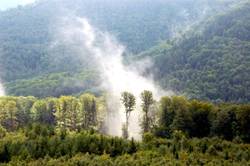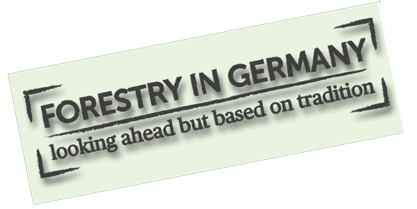Forests in Germany
 |
In Germany, forests are open to everyone for recreation – all forests, whether a state, municipal or privately owned forest. Many people use the forests to relax, to exercise, or just to experience nature. Nonetheless, the forest is also a workplace, a place to be cared for, where timber is harvested and replanted.
Sustainable and ecological forestry combines timber production with nature conservation and climate protection. A healthy forest can provide many services at once: it’s the habitat of plants and animals, it filters and stores drinking water, it has a balancing effect on the climate, purifies the air and provides timber.
One third of Germany is covered by forests. This area has increased consistently over the past 40 years. These forests are no longer primeval forests, but production forests shaped by humans. As a potentially natural vegetation form, beech forest communities would prevail in German forests and cover around 74 % of the forest area. Oak forest communities represent the second largest group of natural forest communities and would account for 18 % of the forest area.
Approx. 73 % of German forests nowadays consist of mixed stands. Spruce accounts for the largest share among the tree species (28 %), followed by pine (23 %), beech trees (15 %) and oak trees (10 %). The tree species proportions vary and depend on the specific natural features and site conditions as well as on different historic developments. Large-scale forest zones can be found in Germany: pine trees abound in the north of Germany, deciduous trees prevail in the lower mountain ranges and coastal areas and southern Germany is rich in spruce trees.
More in forest facts
source: www.bmelv.de






